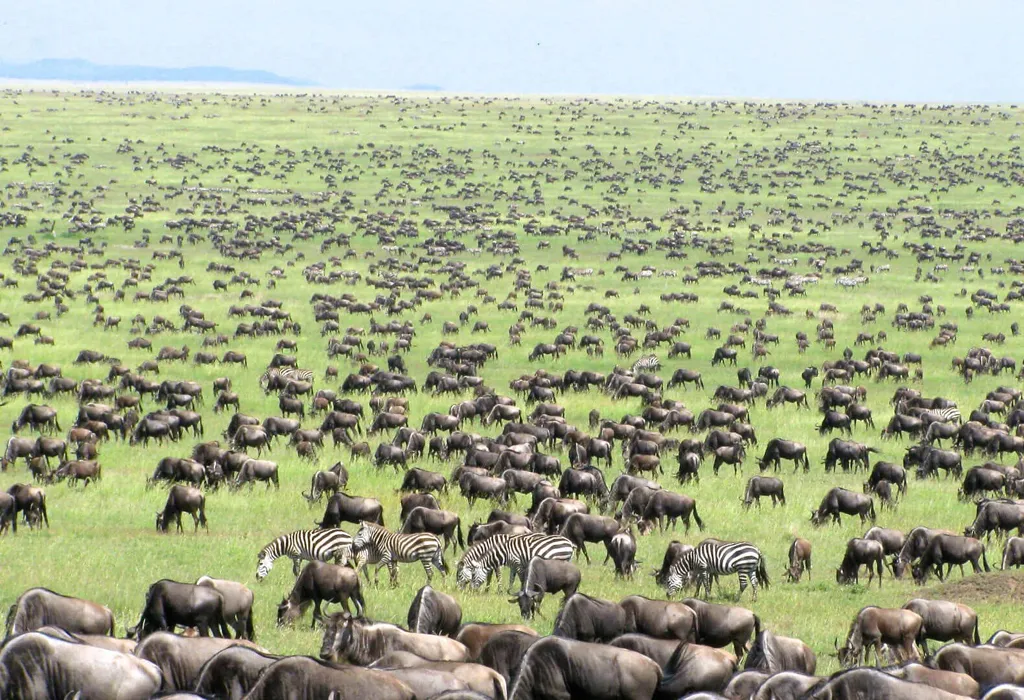The Serengeti Wildebeest Migration Safari is one of the most spectacular wildlife experiences on Earth. Each year, over a million wildebeests, accompanied by hundreds of thousands of zebras and gazelles, traverse the vast plains of the Serengeti in search of fresh grazing lands. For nature enthusiasts, photographers, and adventure travelers, a Serengeti Wildebeest Migration Safari offers a unique opportunity to witness the raw power of nature in motion. Planning your trip carefully ensures that you make the most of this extraordinary journey.
Understanding the Serengeti Wildebeest Migration
The Serengeti Wildebeest Migration Safari revolves around the migratory patterns of the wildebeest, which are influenced by rainfall and the availability of fresh grass. This circular migration spans approximately 1,800 miles annually across the Serengeti in Tanzania and the Maasai Mara in Kenya. On a Serengeti Wildebeest Migration Safari, travelers can observe dramatic river crossings, predator-prey interactions, and large herds moving together in perfect synchronization. Understanding the timeline of this migration is essential to plan your safari effectively.
Best Time for a Serengeti Wildebeest Migration Safari
Timing is crucial for a successful Serengeti Wildebeest Migration Safari. The migration follows a predictable cycle:
- December to March: The herds are typically in the southern Serengeti, enjoying the lush short grass after the rains. This is an ideal time for calving, making it perfect for wildlife photography.
- April to May: The herds begin their gradual movement towards the central Serengeti. Heavy rains during this period may limit accessibility to some areas.
- June to July: This is one of the most thrilling times for a Serengeti Wildebeest Migration Safari. The wildebeest cross the Grumeti River, facing crocodiles and strong currents, creating dramatic wildlife scenes.
- August to October: The herds move towards the northern Serengeti and eventually cross into the Maasai Mara. These months are excellent for witnessing large-scale river crossings and predator activity.
- November: The wildebeests return to the southern Serengeti, completing the cycle.
Planning Your Serengeti Wildebeest Migration Safari
A successful Serengeti Wildebeest Migration Safari requires careful planning. Booking your safari early ensures availability, especially during peak migration periods. Consider choosing a reputable tour operator who specializes in migration safaris. They can provide insights on the best locations, accommodation options, and game drive routes.
Travelers should also factor in the type of safari experience they prefer. Luxury lodges, tented camps, and mobile safari camps each offer unique advantages. Mobile camps allow you to follow the migration closely, enhancing your chances of witnessing key moments. For photographers, proximity to river crossings and predator hotspots is essential.
Tips for an Unforgettable Serengeti Wildebeest Migration Safari
- Pack wisely: Include lightweight clothing, a wide-brimmed hat, sunscreen, and binoculars. Waterproof gear is essential during the rainy season.
- Stay flexible: Wildlife does not follow strict schedules. Being ready to move with the herds enhances your safari experience.
- Hire a knowledgeable guide: Guides with expertise in animal behavior provide invaluable insights, increasing your chances of spotting rare moments.
- Prioritize early mornings and late afternoons: These are the most active times for wildlife, offering the best lighting for photography.
- Respect wildlife: Maintain a safe distance and avoid disturbing animals, ensuring a responsible and ethical safari.
Wildlife Highlights on a Serengeti Wildebeest Migration Safari
A Serengeti Wildebeest Migration Safari is not just about wildebeests. Visitors can expect to see lions, cheetahs, hyenas, elephants, and giraffes. Birdwatchers will delight in spotting species like the lilac-breasted roller and kori bustard. The migration creates an ecosystem in motion, attracting predators and scavengers alike, making every game drive an unforgettable adventure.
Conclusion
A Serengeti Wildebeest Migration Safari is a once-in-a-lifetime experience that showcases the raw beauty and power of nature. Understanding the migration patterns, timing your visit appropriately, and following practical tips can significantly enhance your safari. From witnessing dramatic river crossings to spotting predators in action, every moment of this journey is mesmerizing. Whether you are a wildlife enthusiast, a photographer, or simply seeking adventure, a Serengeti Wildebeest Migration Safari promises memories that last a lifetime and offers a deep connection to the natural rhythms of one of the world’s most iconic landscapes.



